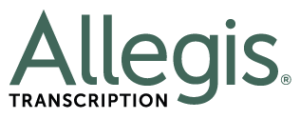How To Find Your Best Fit In A Transcription Job
When it comes to work-from-home transcription jobs, what makes a good fit for one person might be, well, a terrible fit for YOU. This is why it’s so important to do your homework before accepting a job offer or new contract from just any transcription company.
You need to consider (and first be aware of) a number of important factors before committing yourself to a new online transcription job.
So let’s take a look at six important questions to consider when looking for that perfect transcription job.
1) Can you select the orders you transcribe?
Some transcriptionists prefer to have work assigned to them, while others prefer to have a queue system where they can choose work, 24/7. And still, other transcriptionists like being alerted when work becomes available so they can grab it on a first-come, first-served basis.
I’m sure you probably have your own preferences for file assignment, and the same goes for transcription companies. Every company seems to have a different approach to work distribution. Some will assign you files, providing you with little choice or flexibility. Other companies might allow you to choose the files you transcribe.
What’s your preference? Figure out what approach you prefer and use this as one of your decision-making criteria as you assess your freelance transcription job options.
2) What’s the required turnaround time?
If the thought of being chained to your desk, scrambling to complete quick-turnaround orders gives you cold sweats, you’ll want to find a transcription job that accommodates longer turnaround times. I’ve seen all kinds of deadlines out there, from as short as two hours (think emergency room STAT) to days or even weeks (lengthy files or courtroom proceedings).
So, find out how much time will you have to complete files. At Allegis, you have anywhere from 4-24 hours to complete orders.
And don’t forget about time zones and how they will factor into your deadline. If your transcript is due in New York at 6:00 a.m., but that means 3:00 a.m. for you in California, you’re probably going to want to cross the finish line much earlier.
3) What’s the minimum work requirement?
Some online transcription jobs have production requirements and others don’t. Make sure you have a clear understanding of the minimum requirements in a new position. This is especially important when juggling more than one transcription contract.
No one likes to turn down work opportunities, but overcommitting sets you up for failure. And don’t say “yes” just to be nice. You’ll end up stressed and your employers will be frustrated. Remember that life rarely goes as planned.
For example, committing to two contracts where the combined workload is an estimated 40 hours on paper is probably pushing it. Certain transcription orders will take you longer to complete, you’ll get sick, your laundry room will flood—basically, life will throw the unexpected at you. Build in a little wiggle room. Doing so will help keep you sane.
Talk to transcription companies and see what they recommend. They should have insight into what work arrangements are optimal. They can also tell you where they’ve seen transcriptionists experience issues and how to avoid those circumstances.
Just be realistic when assessing how much work you can take on. You don’t have anyone looking over your shoulder in a freelance transcription job—which is nice, but it also requires an extra level of discipline and planning.
4) How much support do you need?
Let’s be honest, some of us like to have easy, regular access to support staff. Others operate just fine on their own with very little assistance. Some of this independence comes from experience, but personal preference certainly factors in as well.
But aside from personal preference and your experience level, no one likes hard-to-reach support staff, especially when it can deadlock your productivity.
So consider how much support you’ll need. Find out how accessible help is if you’re working odd hours and run into trouble. Is there after-hours support? Technical support? Ask other transcriptionists at the company, dig around in online forums, and inquire about the experiences others have had.
Having the support you need is crucial to your success in a work-from-home transcription job.
5) How often do you get paid?
I think we can all agree we enjoy being paid reliably and in a timely manner.
First, before you even check on how often you’re paid, make sure a company PAYS. Yes, unfortunately there are transcription companies out there that don’t always pay their transcriptionists. Luckily you can (usually) find out which companies have poor reputations by checking several of the online transcription forums. Check with your friends in the industry too.
Now that you have reasonable assurance that you’ll be paid, find out what a company’s payment process and frequency is. What’s the invoicing process and frequency look like? How long does it take to receive payment on an invoice? If you have to wait 30 days to receive payment on work you completed two weeks ago, that might be pushing it.
6) How much (and how) do you get paid?
Even if a new position meets all the other criteria here, if the pay rate doesn’t meet your expectations then it might be a deal breaker.
Figuring out what you’ll make often isn’t as straightforward as you might imagine. Companies can pay by the line, audio minute, work order, page, and the list goes on. For example, trying to compare a job opportunity that pays by the line versus a company paying by the page, isn’t an easy task. You’ll need to do a few conversions in order to do a comparison that makes sense.
One way you can compare two different payment methods is by converting them into average hourly pay rates. This is another area where transcription companies often can help. They should be able to tell you average hourly earnings based on a figure like WPM (even though much more factors into earnings than your typing speed). For example, a transcriptionist who types 75 WPM might make $13.50 an hour on average. Again, it’s a rough conversion, but it can be a good start in comparing pay rates when the payment methods are different.
And keep in mind that transcript format varies from company to company. It can’t hurt to request sample transcripts so you can compare each side-by-side. You might find that a template’s formatting makes a difference in the average word count per page. For example, one question you might as is if a company require double or single-spacing between speakers. Find out formatting details if you can.
Additional considerations
And finally, beyond the six factors we looked at here, don’t forget to consider things like the type of transcription (insurance, general, medical, legal, etc.), the company’s reputation, the subject matter of the work, and the audio quality. But these six questions are a great place to start if you’re not sure what factors to consider that will you help you find the perfect fit in your next transcription job.
——————————————-
Psst! We’re hiring. If you’re an awesome transcriptionist looking for something new, click below to see our open positions.
——————————————-




